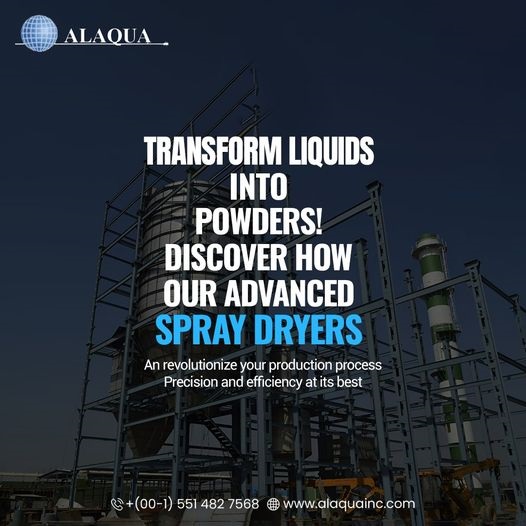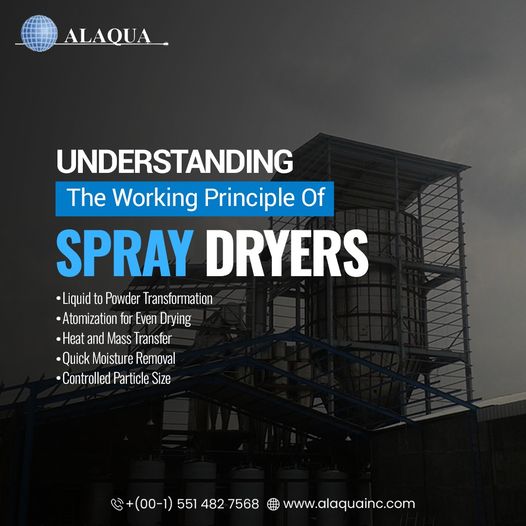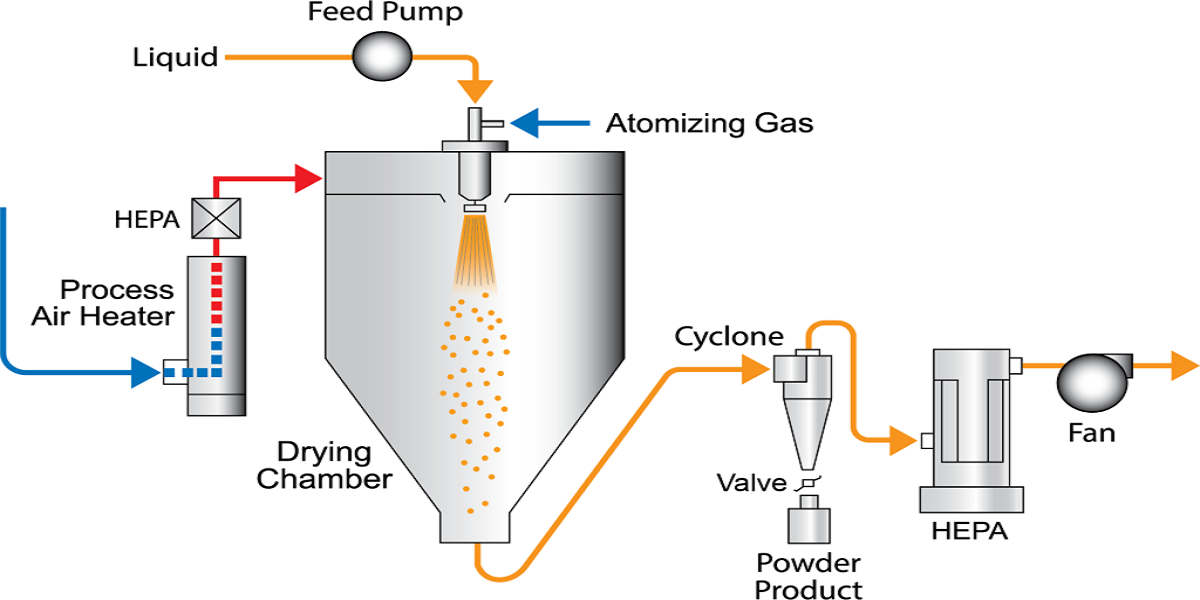Common Problems with Spray Dryers and How to Fix Them
Spray dryers are essential pieces of equipment used in various industries, including food, pharmaceuticals, and chemicals, for converting liquids into powders. They offer significant advantages, such as uniform particle size, reduced drying times, and high product quality. However, like any machinery, spray dryers can encounter issues that hinder their performance. Understanding these common problems and knowing how to address them can lead to improved efficiency and product quality. For businesses seeking to optimize their spray drying processes, partnering with a reliable spray dryer supplier can provide valuable insights and support.
In this blog, we’ll explore some typical challenges faced by spray dryers and provide solutions for each.
Frequent Issues with Spray Dryers: Identifying and Resolving Common Problems
Top Challenges Faced by Spray Dryers and Their Solutions are:-
1. Inconsistent Product Quality
Problem
One of the most common problems with spray dryers is inconsistent product quality, which can manifest as variations in particle size, moisture content, or color. This inconsistency can be due to several factors, including feed composition, atomization, and drying parameters.
Solution
To resolve inconsistent product quality, consider the following steps:
- Regularly Monitor Feed Composition: Ensure that the feed material is consistent in composition. Variations in solids content, viscosity, and temperature can affect the atomization and drying process. Conduct regular analyses of the feed material to identify and mitigate variations.
- Optimize Atomization: The type of atomizer used (e.g., rotary or nozzle) can significantly influence particle size and distribution. Evaluate the atomization technique and make adjustments to the pressure, flow rate, and nozzle design to achieve the desired particle size.
- Control Drying Parameters: Maintain optimal drying conditions, including inlet temperature, outlet temperature, and airflow. Use sensors and automation systems to monitor these parameters continuously and make real-time adjustments as needed.
2. High Energy Consumption

Problem
Spray dryers can consume a considerable amount of energy, leading to increased operational costs. High energy consumption may result from improper design, inadequate insulation, or inefficient operation.
Solution
To reduce energy consumption in spray drying processes, consider implementing the following strategies:
- Evaluate Dryer Design: Assess the design of the spray dryer to ensure it is suitable for the specific application. Look for features that improve energy efficiency, such as heat exchangers, which recover waste heat from exhaust gases.
- Improve Insulation: Check the insulation of the spray dryer and associated ductwork. Proper insulation minimizes heat loss, reducing the energy required to maintain drying temperatures.
- Optimize Operating Conditions: Regularly review operating conditions to ensure they are optimized for energy efficiency. Adjusting the inlet and outlet temperatures, airflow rates, and feed rates can lead to significant energy savings.
3. Equipment Wear and Tear
Problem
Spray dryers are subjected to high temperatures and abrasive materials, leading to equipment wear and tear. This deterioration can result in reduced efficiency, increased maintenance costs, and potential product contamination.
Solution
To mitigate wear and tear on spray dryer equipment, consider the following preventive measures:
- Regular Maintenance: Establish a routine maintenance schedule to inspect and service critical components, such as atomizers, heat exchangers, and cyclones. To stop more damage, replace worn or damaged parts as soon as possible.
- Use Wear-Resistant Materials: When selecting construction materials, opt for wear-resistant materials that can withstand harsh operating conditions. For example, ceramic coatings or hard alloys can provide added durability for critical components.
- Monitor Operating Conditions: Excessive temperatures, pressures, or flow rates can accelerate wear. Continuously monitor these parameters to ensure they remain within specified limits.
4. Poor Particle Collection Efficiency
Problem
Inefficient particle collection can lead to product loss, lower yields, and increased emissions. Factors contributing to poor collection efficiency may include incorrect cyclone design, inadequate airflow, or improper operation.
Solution
To improve particle collection efficiency in spray dryers, consider the following steps:
- Assess Cyclone Design: Evaluate the design and sizing of the cyclone or collection system. Ensure it is suitable for the particle size and density of the product being dried. Adjusting the inlet design and optimizing the cyclone dimensions can enhance performance.
- Optimize Airflow Rates: Proper airflow is crucial for effective particle collection. Measure and adjust airflow rates to ensure they match the specifications for the spray drying process. This may involve using variable frequency drives to control fan speeds.
- Implement Secondary Collection Systems: In cases where cyclones are insufficient, consider adding secondary collection systems, such as bag filters or electrostatic precipitators, to capture finer particles.
5. Product Caking or Agglomeration
Problem
Caking or agglomeration of the dried product can pose significant challenges, leading to issues with downstream processing, storage, and transportation. This problem is often attributed to high moisture content or improper drying conditions.
Solution
To prevent product caking or agglomeration in spray-dried products, consider these strategies:
- Control Moisture Content: Monitor and control the moisture content of both the feed and the dried product. Use moisture sensors to provide real-time feedback and adjust drying conditions accordingly.
- Optimize Drying Parameters: Ensure that the drying parameters, such as inlet temperature and residence time, are optimized to achieve the desired moisture content. Conduct trials to find the optimal conditions for each specific product.
- Add Anti-Caking Agents: Incorporate anti-caking agents into the formulation if necessary. These additives can help prevent particles from sticking together during storage.
6. Foam Formation
Problem
Foam formation during the spray drying process can disrupt atomization, reduce product quality, and lead to equipment fouling. Foam can be caused by the nature of the feed material or the presence of surfactants.
Solution

To minimize foam formation in spray dryers, consider the following approaches:
- Use Anti-Foaming Agents: Incorporate food-grade anti-foaming agents into the feed material. These agents help reduce surface tension, minimising foam formation during the drying process.
- Optimize Feed Viscosity: Ensure the feed material is at the correct viscosity. High-viscosity feeds can contribute to foam formation. To get the ideal viscosity, modify the formulation or processing parameters.
- Control Feed Rate: Regulate the feed rate to prevent excessive liquid from entering the drying chamber, which can exacerbate foam formation. Implementing feed flow control systems can help maintain consistent rates.
Conclusion
Spray dryers play a vital role in many industries, but they are not without their challenges. By understanding common problems such as inconsistent product quality, high energy consumption, equipment wear, poor particle collection efficiency, product caking, and foam formation, operators can implement effective solutions to enhance performance.
Regular maintenance, continuous monitoring, and optimizing operational parameters are crucial for efficient spray dryer operation. This approach maximizes processes, improves product quality, and reduces costs. Investing in training for operators and maintenance personnel ensures they can troubleshoot and resolve issues. Proactively addressing common problems allows companies to maximize spray drying technology’s potential and remain competitive.
Alaqua Inc is a leading supplier of heat exchangers, specializing in high-performance solutions for various industries. Collaborating closely with manufacturers in the USA, AlaquaInc focuses on delivering innovative, efficient products that enhance thermal management and energy efficiency, ensuring clients achieve optimal performance in their operations.














Post Comment